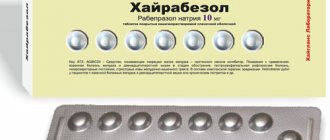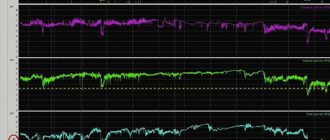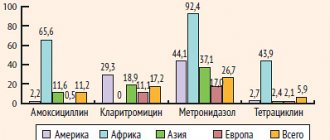Hemorrhoids can become inflamed in any person, even those who do not have a chronic disease of the digestive tract. There are many reasons leading to this condition. But most often it is provoked by eating poor-quality food, refusing sports, and prolonged sitting. This leads to inflammatory formations on hemorrhoids. If there is no treatment for a long time, periodic bleeding may be added to this condition. You need to contact a competent proctologist who will conduct a comprehensive diagnosis and prescribe the right treatment methods.
Causes of hemorrhage
The main damaging factors leading to hemorrhoids and areas of bleeding are identified.
- Prolonged constipation
. Excessively hard stool leads to stretching and deformation of the intestinal walls. Large nodes form and begin to become inflamed, releasing blood. The regeneration process takes a long time, as prolonged pressure and mechanical damage are maintained. Blood is released with every bowel movement. - Reduced tone of the vascular endothelium
. With heart failure, atherosclerosis, diabetes mellitus and other pathologies, the vascular endothelium becomes weak. Constant constipation and other damaging factors in the intestines cause increased compression of blood vessels. Anal fissures form, from which blood often leaks. - Active, strong efforts
during bowel movements. The excretion of feces is accompanied by blood and severe pain. - Anal intercourse
. This is a strong damaging factor, leading to inflammation and bleeding. Areas of damage can occur even in patients without hemorrhoids. - Prolonged diarrhea
. Severe diarrhea leads to chronic irritation of the intestinal wall. Its vessels become thinner, the mucous membrane becomes covered with cracks. Hemorrhoids become very inflamed and bleed. - Prolonged sitting position
. The absence of even minimal physical activity leads to blood stagnation and vascular damage.
Hemorrhoids are caused by damaged veins that become deformed under the influence of strong pressure. Their walls compress, the blood pressure inside increases. Local circulatory disorders occur, and hemorrhoidal cones gradually develop.
Medicines for hemorrhoids: description, purpose and classification of medicines
Hemorrhoids are one of the manifestations of varicose veins, which are localized in the lower part of the rectum and anus. The formation of painful nodes is associated with impaired blood microcirculation and thinning of the venous wall, which leads to stretching of blood vessels and stagnation of blood in the large saphenous veins. There are internal and external hemorrhoids. The severity of symptoms depends on the stage of the disease and the individual characteristics of the patient’s body.
Hemorrhoidal “bumps” can be treated with general and local medications. They will help to quickly relieve pain, swelling, inflammation, and will also help reduce the deformed node. The most effective use of medications is in the early stages of disease development and as preventive measures. The use of tablets and ointments is prescribed only by the attending physician after a thorough diagnosis of the patient.
Quick elimination of bleeding from hemorrhoids
If the bleeding occurs initially, it may need to be stopped quickly before contacting a doctor. The following drugs are used for this:
- Vikasol;
- Dicynone;
- Etamzilat.
The listed drugs are indicated for serious bleeding, when they need to be quickly blocked. 1 ampoule is enough, which is administered by injection into the gluteal muscle. If the bleeding is not severe, oral tablets can be used. Doctors recommend taking 1 tablet 1-2 times a day.
If the above methods do not help, you can urgently use a hemostatic sponge. This is a tissue in which 2 substances are concentrated:
- boric acid;
- Furacilin.
It is enough to press the product against the affected area for up to 3 minutes for a disinfecting and hemostatic effect to occur. The technique is applicable for external hemorrhoids. The vessels are compressed, bleeding stops, and the tone of the endothelium further increases.
To reduce bleeding, doctors prescribe cold compresses:
- take a bandage or gauze and soak it in ice water;
- apply to the anal area for up to 1 minute, then take a break and repeat;
- if ice is placed in the tissue, the time should not exceed 30 seconds per application.
If the use of water is not enough, use an ice candle according to the following method:
- roll a small piece of paper into a cone;
- pour water inside and place it in the freezer;
- if a bleeding area appears, the ice is pulled out of the paper and inserted into the anus for up to 10 seconds;
- If bleeding does not stop, the technique is repeated after 2 minutes.
The listed methods are used if bleeding has just appeared. If it is chronic and appears periodically, it is better to use medications prescribed by a doctor. Sometimes this can be a sign of a pathology that requires emergency help.
Tranexam 250 mg 10 pcs. film-coated tablets
pharmachologic effect
Antifibrinolytic agent.
Tranexamic acid specifically inhibits the activation of profibrinolysin (plasminogen) and its conversion to fibrinolysin (plasmin). It has a local and systemic hemostatic effect for bleeding associated with increased fibrinolysis (platelet pathology, menorrhagia). Also, tranexamic acid, by suppressing the formation of kinins and other active peptides involved in allergic and inflammatory reactions, has anti-allergic and anti-inflammatory effects. Absorption after oral administration of doses in the range of 0.5-2 g is 30-50%. The time to reach the maximum concentration when taken orally is 0.5, 1 and 2 g-3 hours, the maximum concentration is 5, 8 and 15 mcg/ml, respectively. Communication with plasma proteins (profibrinolysin) - less than 3%.
Distributed relatively evenly in tissues (with the exception of cerebrospinal fluid, where the concentration is 1/10 of the plasma concentration); penetrates the placental barrier into breast milk (about 1% of the concentration in maternal plasma). It is found in seminal fluid, where it reduces fibrinolytic activity, but does not affect sperm migration. The initial volume of distribution is 9-12 liters. Antifibrinolytic concentration in various tissues lasts 17 hours, in plasma - up to 7-8 hours.
A small part is metabolized. The concentration-time curve has a three-phase shape with a half-life in the final phase of 3 hours. Total renal clearance is equal to plasma (7 l/h). Excreted by the kidneys (the main route is glomerular filtration) - more than 95% unchanged during the first 12 hours.
Two metabolites of tranexamic acid have been identified: N-acetylated and deaminated derivatives. In case of impaired renal function, there is a risk of accumulation of tranexamic acid.
Composition and release form Tranexam 250 mg 10 pcs. film-coated tablets
One tablet contains: tranexamic acid 250 mg.
Excipients (core): microcrystalline cellulose, hyprolose, sodium carboxymethyl starch, talc, colloidal silicon dioxide, calcium stearate.
Excipients (shell): hypromellose, titanium dioxide, talc, macrogol. Film-coated tablets, 250 mg. 10 tablets in a blister pack made of polyvinyl chloride film and printed varnished aluminum foil. 1, 2, 3, 5 blister packs along with instructions for use are placed in a cardboard pack.
Description of the dosage form
Film-coated tablets
Characteristic
The tablets are biconvex, white, film-coated. On a cross section - white or white with a creamy or grayish tint.
Directions for use and doses
Inside, regardless of food intake.
Short-term treatment of bleeding caused by increased fibrinolysis:
The recommended standard dose of tranexamic acid is 15-25 mg/kg body weight, on average 1000-1500 mg 2-3 times a day.
- For prostatectomy and surgical interventions on the bladder: 1000 mg 6 hours before surgery, then 1000 mg 3-4 times a day until gross hematuria disappears. It is not recommended to use the drug for more than 2 weeks after surgery.
- For menorrhagia: the recommended dose is 1000 mg 3 times a day until menorrhagia stops, but not more than 4 days. In case of profuse bleeding, the dose of the drug can be increased, but the total daily dose should not exceed 4000 mg. Treatment with tranexamic acid should not be started before menstrual bleeding occurs. In clinical studies, tranexamic acid was not used for more than three consecutive menstrual cycles.
- For recurrent nosebleeds: 1000 mg 3 times a day for 7 days.
- After cervical conization surgery: 1500 mg 3 times a day for 12 days after surgery.
- For traumatic hyphema: 1000-1500 mg 3 times a day (target dose 25 mg/kg body weight) for 7 days.
Patients with hemophilia: the drug is prescribed orally at a dose of 25 mg/kg body weight 2 hours before tooth extraction, and then 1000-1500 mg 3 times a day for 6-8 days. Coagulation factors VIII or IX should be prescribed simultaneously.
For hereditary angioedema: 1000-1500 mg 2-3 times a day. If the patient can foresee an exacerbation of the disease, the drug can be taken intermittently depending on the presence of prodromal symptoms. In other cases, the drug should be taken continuously.
Bleeding during pregnancy: 250-500 mg 3-4 times a day until bleeding stops completely. The average duration of treatment is 7 days.
Use of the drug in special groups of patients
Renal dysfunction
In patients with mild to moderate impairment of renal excretory function, adjustment of the dose and frequency of tranexamic acid administration is necessary:
Serum creatinine concentration | Glomerular filtration rate (GFR) | Tranexamic Acid Dose | Frequency of reception
120-249 µmol/l (1.36-2.82 mg/dl) | 60-89 ml/min/1.73m2 | 15 mg/kg body weight | 2 times a day
250-500 µmol/L (2.83-5.66 mg/dL) | 30-59 ml/min/1.73m2 | 15 mg/kg body weight | 1 time per day
Liver dysfunction
In patients with impaired liver function, no dose adjustment is required.
Elderly age
In elderly patients in the absence of renal failure, no dose adjustment is required.
Childhood
Data regarding the effectiveness and safety of tranexamic acid in children are limited.
In children, tranexamic acid is prescribed at a rate of 25 mg/kg body weight 2-3 times a day.
What to do if you miss a dose
If you miss one dose, you must take the next dose of the drug at the prescribed time. You should not take a double dose of the drug after missing the next dose.
Pharmacodynamics
Antifibrinolytic agent. Tranexamic acid specifically inhibits the activation of profibrinolysin (plasminogen) and its conversion to fibrinolysin (plasmin). It has a local and systemic hemostatic effect for bleeding associated with increased fibrinolysis (platelet pathology, menorrhagia). Also, tranexamic acid, by suppressing the formation of kinins and other active peptides involved in allergic and inflammatory reactions, has anti-allergic and anti-inflammatory effects.
Pharmacokinetics
Absorption after oral administration of doses in the range of 0.5-2 g is 30-50%. The time to reach the maximum concentration when taken orally 0.5, 1 and 2 g is 3 hours, the maximum concentration is 5, 8 and 15 mcg/ml, respectively. Communication with plasma proteins (profibrinolysin) - less than 3%.
Distributed relatively evenly in tissues (with the exception of cerebrospinal fluid, where the concentration is 1/10 of the plasma concentration); penetrates the placental barrier into breast milk (about 1% of the concentration in maternal plasma). It is found in seminal fluid, where it reduces fibrinolytic activity, but does not affect sperm migration. The initial volume of distribution is 9-12 liters. Antifibrinolytic concentration in various tissues lasts 17 hours, in plasma - up to 7-8 hours.
A small part is metabolized. The concentration-time curve has a three-phase shape with a half-life in the final phase of 3 hours. Total renal clearance is equal to plasma (7 l/h). Excreted by the kidneys (the main route is glomerular filtration) - more than 95% unchanged during the first 12 hours.
Two metabolites of tranexamic acid have been identified: N-acetylated and deaminated derivatives. In case of impaired renal function, there is a risk of accumulation of tranexamic acid.
Indications for use Tranexam 250 mg 10 pcs. film-coated tablets
Short-term treatment of bleeding associated with increased fibrinolysis in the following pathological conditions:
- Prostatectomy; surgical interventions on the bladder;
- Menorrhagia;
- Nose bleed;
- Conization of the cervix;
- Traumatic hyphema (hemorrhage into the anterior chamber of the eye).
Prevention and treatment of bleeding in patients with hemophilia who undergo minor surgery (including tooth extraction);
Hereditary angioedema (prevention of exacerbations of the disease).
Bleeding during pregnancy.
Contraindications
- Hypersensitivity to tranexamic acid or other components of the drug;
- Severe chronic renal failure (glomerular filtration rate [GFR] less than 30 mg/ml/1.73 m2) due to the risk of accumulation;
- Venous or arterial thrombosis currently or in history (deep vein thrombosis of the legs, pulmonary embolism, thrombosis of intracranial vessels, etc.) if simultaneous anticoagulant therapy is impossible;
- Fibrinolysis due to consumption coagulopathy (hypocoagulable stage of disseminated intravascular coagulation syndrome [DIC]);
- history of seizures;
- Acquired color vision impairment;
- Subarachnoid hemorrhage (due to the risk of developing cerebral edema, ischemia and cerebral infarction);
- Children up to 3 years of age (solid dosage form).
Application of Tranexam 250 mg 10 pcs. film-coated tablets during pregnancy and breastfeeding
In preclinical studies, tranexamic acid did not have a teratogenic effect. Adequate and strictly controlled studies of the effectiveness and safety of tranexamic acid in pregnant women have not been conducted. Tranexamic acid crosses the placenta and may be present in cord blood in concentrations close to maternal levels.
Because animal reproduction studies do not always predict reactions in humans, tranexamic acid should be used during pregnancy only when absolutely necessary.
Tranexamic acid passes into breast milk (the concentration of the drug in milk is about 1% of the concentration in the mother's blood plasma). The development of an antifibrinolytic effect in an infant is unlikely. However, caution should be exercised when using tranexamic acid in nursing mothers.
special instructions
Tranexamic acid should be used with caution in the following situations:
- Hematuria caused by diseases of the renal parenchyma and bleeding from the upper urinary tract (risk of secondary mechanical obstruction of the urinary tract by a blood clot with the development of anuria) (See section "Special instructions");
- Patients with a high risk of developing thrombosis (history of thromboembolic events or family history of thromboembolic diseases, verified diagnosis of thrombophilia);
- Disseminated intravascular coagulation syndrome [DIC syndrome]);
- Presence of blood in cavities, for example, in the pleural cavity, joint cavities and urinary tract;
- Patients receiving anticoagulant therapy (experience is limited);
- Simultaneous use of drugs of blood coagulation factors II, VII, IX and X in combination with [prothrombin complex] or anti-inhibitor coagulant complex (See section “Interaction with other drugs”);
- Treatment of menorrhagia in patients under the age of 15 years (experience is limited);
- Patients taking combined oral contraceptives (due to an increased risk of venous thromboembolic complications and arterial thrombosis) (See section "Interaction with other drugs").
Overdose
There are limited data on cases of overdose. One case of overdose has been reported (ingestion of 37 g of tranexamic acid).
Symptoms: dizziness, headache, nausea, vomiting, diarrhea, orthostatic symptoms (including dizziness when moving from a horizontal to a vertical position), orthostatic arterial hypotension. Predisposed patients have an increased risk of thrombosis.
Treatment: no known antidote. If an overdose of tranexamic acid is suspected, hospitalization is necessary. When providing assistance, induce vomiting, then perform gastric lavage. Activated carbon reduces the absorption of tranexamic acid when taken orally during the first 1-2 hours after an overdose. If the patient is unconscious or has difficulty swallowing, activated charcoal can be administered through a nasogastric tube. It is recommended to take orally or parenterally administer large amounts of fluid to enhance renal excretion, forced diuresis, and control the amount of urine excreted. In some cases, the use of anticoagulants may be justified.
Side effects Tranexam 250 mg 10 pcs. film-coated tablets
The incidence of adverse drug reactions is determined in accordance with the WHO classification: very often (more than 1/10), often (more than 1/100, ≤1/10), infrequently (more than 1/1000, ≤1/100), rarely (more than 1/10000, ≤1/1000), very rare (less than 1/10000), frequency unknown (cannot be determined from available data).
Gastrointestinal disorders: often - nausea, vomiting, diarrhea (symptoms disappear when the dose is reduced).
Disorders of the skin and subcutaneous tissues: rarely - allergic skin reactions, including allergic dermatitis.
Disorders of the organ of vision: rarely - visual disturbances, including impaired color perception, thrombosis of retinal vessels.
Vascular disorders: rarely - thromboembolic complications, marked decrease in blood pressure (usually due to excessively rapid intravenous administration, in exceptional cases - after oral administration); very rarely - arterial and venous thrombosis of various locations; frequency unknown - acute myocardial infarction, cerebral artery thrombosis, carotid artery thrombosis, stroke, deep vein thrombosis of the legs, pulmonary embolism, renal artery thrombosis with the development of cortical necrosis and acute renal failure, occlusion of coronary artery bypass graft, thrombosis of the central artery and retinal vein .
Immune system disorders: very rarely - hypersensitivity reactions, including anaphylactic shock.
Nervous system disorders: rarely - dizziness, convulsions (usually with intravenous administration).
Drug interactions
Special clinical studies have not been conducted to study the interactions of tranexamic acid with other drugs.
Tranexamic acid prevents the development of the pharmacological effect of fibrinolytic (thrombolytic) drugs.
Combined oral contraceptives increase the risk of venous thromboembolic complications and arterial thrombosis (in particular, ischemic stroke and myocardial infarction). There is no experience with the use of tranexamic acid in women taking combined oral contraceptives. Since tranexamic acid has an antifibrinolytic effect, simultaneous use with combined oral contraceptives may lead to an additional increase in the risk of thrombotic complications.
The simultaneous use of tranexamic acid with drugs of blood coagulation factors II, VII, IX and X in combination [prothrombin complex] or anti-inhibitor coagulant complex increases the risk of thrombosis.
There may be an increased risk of thrombotic complications (in particular myocardial infarction) with simultaneous use of tranexamic acid with hydrochlorothiazide, desmopressin, ampicillin-sulbactam, ranitidine and nitroglycerin.
When combined with hemostatic drugs, activation of thrombus formation is possible.
Concomitant use of tranexamic acid with anticoagulants should be carried out under the strict supervision of a physician (experience is limited).
Tablets for hemorrhoids with bleeding
The optimal tablets designed to eliminate bleeding from hemorrhoids are listed in the table.
| Medicine | Tablets per dose | Daily dose | Treatment course, days |
| Phlebodia 600 | 1 | 3 | 7 |
| Venolek in the acute phase | 3 | 2 | 3 |
| Venolek in the chronic period | 2 | 2 | 3 |
| Detralex 500 mg in the acute period | 3 | 2 | 5 |
| Detralex in the chronic period | 2 | 2 | 4 |
| Venarus in the acute phase | 1 | 2 | 3 |
| Venarus in the chronic period | 1 | 2 | 3 |
The tablets used act not only on hemorrhoids. They are effective for varicose veins and a predisposition to the formation of blood clots.
Effective ointments for external hemorrhoids
These drugs are also successfully used in the treatment of hemorrhoidal manifestations. They make the patient feel better, relieve pain, itching, stop bleeding, and help reduce lumps.
Antihemorrhoidal ointments are most effective in treating acute forms of the disease.
What inexpensive ointments help to quickly relieve symptoms and cure the disease at home:
- Heparin
. The active ingredient is heparin, it prevents the formation of blood clots, is used to relieve nodes, and is prescribed for hematomas, bruises, and varicose veins. Can be used by pregnant women and prescribed to children. - Proctosan
. The active component is bismuth, which has hemostatic and antipruritic properties. Effective in advanced stages. - Troxevasin
. It is used in complex therapy, strengthens the walls of blood vessels, and has a cooling property. - Levomekol
. A well-known and widely sought after ointment. It has no contraindications and can be used by women during pregnancy and after childbirth.
At the pharmacy you can also buy Vishnevsky ointment, Ichthyol, Sulfur, Relief, Bezornil, Aurobin.
Gels
Gels have the softest and most gentle effect. They are well absorbed, eliminate the main unpleasant symptoms of the disease, restore the structure of blood vessels, and many have a cooling effect. Among the numerous list, the following gels are the most effective:
- Troxevasin
. The active component, the bioflavonoid troxerutin, penetrates the walls of blood vessels, helps restore cell membranes, reduces swelling and pain. - Hepatrombin
. It has antithrombotic and anti-inflammatory effects. - Lyoton
. The active substance is heparin sodium salt. It is an analgesic, decongestant, antiexudative, anticoagulant drug. Often prescribed in the postoperative period to stimulate regenerative processes.
Before using any medicine, you should read all recommendations for use, contraindications and incompatibility with other pharmaceuticals.
As a rule, all gels are gentle, have no side effects and can be used for a long time.
The gel mass is applied to a clean gauze pad and applied to the inflamed area.
Before treatment, it is better to empty the intestines, wash thoroughly, and dry the area where the product is applied with a dry soft cloth.
Pills
Among the products produced in tablets, the following pharmaceuticals are the most effective:
,
- Chemoroidin
. A natural herbal medicine aimed at strengthening the walls of blood vessels. Eliminates unpleasant symptoms (burning, itching, pain). Hemoroidin must be taken orally for a long time. - Detralex
, is available in the form of coated tablets. Helps improve blood microcirculation, lymphatic drainage, and better lymph outflow. Taken orally. - Pylex
. A combined herbal medicine, the action of which is aimed at increasing the tone of the walls of blood vessels, relieving swelling and pain. Recommended for bleeding. Taken rectally. - Litovit B
. Belongs to the category of herbal medicines. Burnet extract, zeolite, bran improve digestion and give elasticity to the walls of blood vessels. Recommended during pregnancy and women who are breastfeeding. Take one tablet in the morning and at night. - Asklezan-A
. Dietary supplement capsules based on hazelnut, horse chestnut, arnica extracts, lingonberry leaves with the addition of olive oil and beeswax help improve blood circulation. Capsules are taken orally and are also available in gel form.
Traditional methods of therapy
Traditional methods of therapy should be used as additional treatment. The main remedy remains medications prescribed by a doctor. The extracts used should be used only with the permission of the proctologist.
Calendula infusion
Method of preparing medicinal tincture:
- a tablespoon of the dried plant is placed in a container;
- pour 200 ml of boiling water;
- cover with a lid and leave for at least 2 hours;
- strain the liquid.
The resulting medicinal infusion is used for 2 methods:
- washing;
- microenema.
To make a microenema, you need to draw 40 ml of liquid into a sterile container. The solution is injected through the anus and held for 20 minutes. To prevent it from leaking out before this time, lie on your stomach. The technique is applicable for 10 days in a row.
Chamomile decoction
To cause a therapeutic effect, a decoction is first prepared according to the following method:
- pour 1 tablespoon of dried herb into the container;
- pour 200 ml of water;
- cook in a water bath for 30 minutes, without bringing to a boil.
Microclysters are carried out in stages:
- 50 milliliters of solution is administered through the anus;
- leave to infuse for up to 20 minutes, lying on your stomach;
- repeat the procedure 3 times a day for 1 week.
Chamomile has an anti-inflammatory and regenerative effect.
Yarrow decoction
Method for preparing a decoction from a medicinal plant:
- 1 tablespoon of raw materials is placed in a container, pour 250 ml of boiling water;
- simmer for 20 minutes, do not boil;
- leave for 2 hours, filter.
If the liquid becomes cool, add warm boiled water. Then use according to the following rules:
- a sterile bandage or gauze is soaked in the liquid;
- apply to the affected area for 20 minutes;
- You can use an enema of 30 ml of liquid 3 times a day.
The duration of the therapy period is 7-10 days.
If the patient’s health worsens and a large amount of blood is released, medications are initially used. When the condition stabilizes a little, the therapy is supplemented with plant extracts. If you use combined treatment, intestinal recovery will occur much faster.
Diet for hemorrhoids with bleeding
To speed up recovery and prevent periodic exacerbations of pathology, it is recommended to adhere to a diet according to the following rules:
- introducing plenty of plant foods containing fiber to prevent constipation;
- eating dried apricots, raisins, prunes, they stimulate intestinal motility and soften stool;
- drink a lot of water, dried fruit compotes (at least 2 liters of any liquids per day);
- for breakfast they eat porridge made from rice, millet, semolina, buckwheat (porridge should be made with milk, you can add dried fruits);
- prepare simple soups with a small content of meat products, of which beef and chicken are preferable;
- for lunch 2 times a week they eat fish, which needs to be baked or stewed; frying is not recommended;
- exclude foods that cause stress on the gastrointestinal tract - legumes, soda, alcohol, baked goods.
It is better to choose a diet only by your doctor. He will take into account the patient’s medical history and create the correct diet that does not harm the intestines.
If a patient is diagnosed with hemorrhoids, treatment must be carried out only under the supervision of a therapist, proctologist, or surgeon. Often hemorrhoids become very inflamed, leading to bleeding. In this case, you need to start complex therapy, consisting of medications, plant extracts, and optimal physical activity. Hemorrhoids are often found in pregnant women or women who have recently given birth. Treatment should be carried out under the supervision of a physician, since some medications are inadmissible during this period. If hemorrhoids are not strictly controlled, a complication develops. It can go into a chronic stage, which will bring pain to the patient, difficulty in defecation and other complications.
How to choose a medicine?
The choice of treatment format largely depends on the severity of the disease, the intensity of symptoms and the individual characteristics of the patient’s body. Only your attending physician can prescribe the most effective medicine for you after a visual examination and clinical diagnosis of the nodes. Depending on which symptom causes more concern, experts may recommend the following group of remedies:
- For severe pain syndrome - rectal suppositories Procto-Glivenol, Relief, Lidocaine, Trimecaine;
- For anal bleeding - Anestezol, Natalsid;
- For hemorrhoids during pregnancy - Betiol, Pasteurizan, Phlebodia. Remember that the use of any medications is strictly prohibited in the 1st trimester of pregnancy and lactation;
- Herbal remedies based on sea buckthorn, pumpkin and shark liver oil have a general strengthening effect and promote healing of the mucous membrane.







